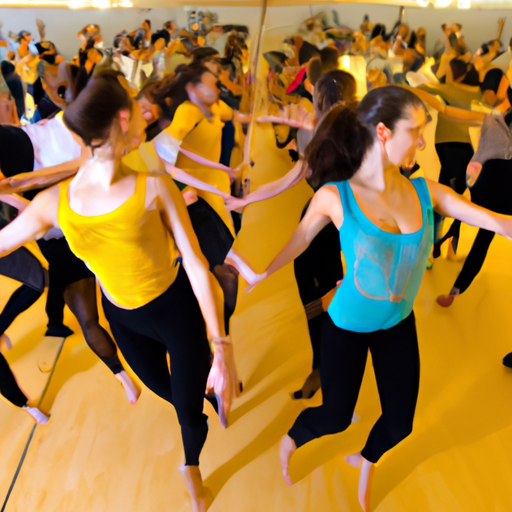
Imagine stepping out of your comfort zone and into a world filled with rhythm, laughter, and new experiences. “Would A Dance Class Together Interest You?” offers you and a partner the opportunity to discover the joy of dancing together. Whether you’re a beginner or have two left feet, this dance class is designed to make you feel comfortable and have fun. With professional instructors guiding you every step of the way, you’ll learn various dance styles and create unforgettable memories. So, why not lace up your dancing shoes and embark on this exciting journey?
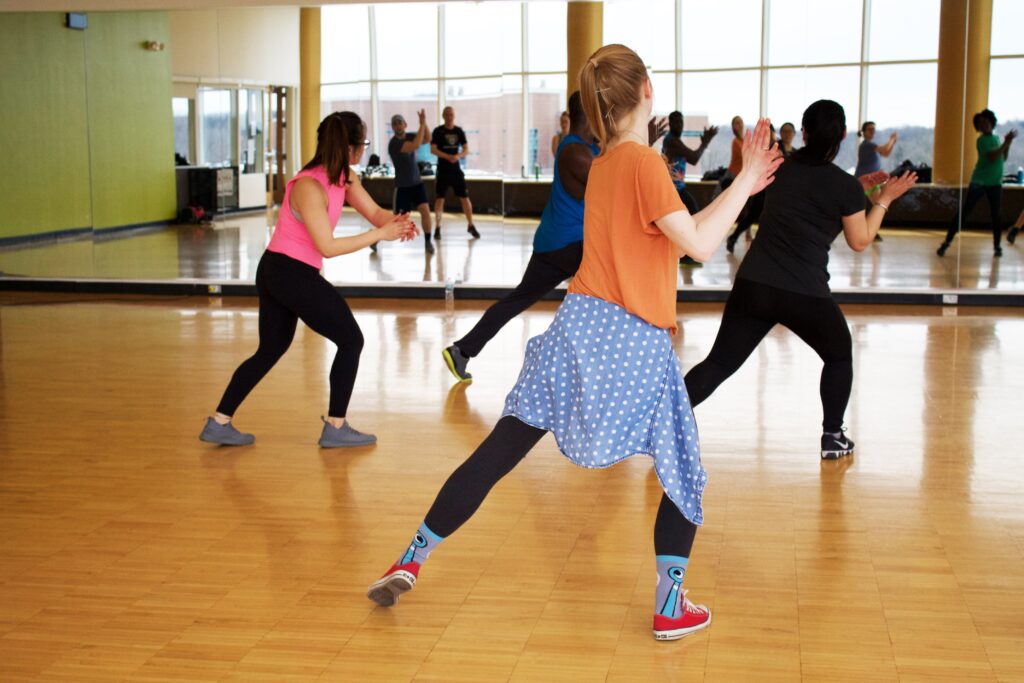
Benefits of Taking a Dance Class
Physical Fitness
Taking a dance class is a fantastic way to improve your physical fitness. Dance is a highly active and dynamic form of exercise that works your entire body. It combines cardiovascular endurance with strength, balance, and flexibility. Whether it’s ballet, hip hop, or salsa, dance classes involve various movements, jumps, and routines that engage your muscles and increase your stamina. Regular dance practice can help you burn calories, tone your muscles, and improve your overall fitness levels.
Improved Coordination
One of the major benefits of dance classes is improved coordination. In order to execute dance moves and routines, you need to synchronize your body movements with the music and the choreography. This requires a high level of coordination between your brain, muscles, and limbs. Dance classes help to develop your sense of rhythm and timing, as well as enhance your spatial awareness and motor skills. With practice, you’ll find yourself becoming more graceful and fluid in your movements, both on and off the dance floor.
Increased Flexibility
Flexibility is another key advantage of taking dance classes. Many dance styles, such as ballet and contemporary, involve stretching and elongating the muscles to achieve elegant and expressive movements. Regular stretching routines in dance class can help to improve your flexibility and range of motion. As your muscles become more limber, you’ll find it easier to perform dance moves with greater ease and precision. Improved flexibility can also benefit your daily life by reducing the risk of injuries and improving your overall mobility.
Stress Relief
In addition to the physical benefits, dance classes can also provide a much-needed break from the stresses of daily life. Dancing allows you to let go of your worries and fully immerse yourself in the present moment. Moving your body to the music releases endorphins, which are natural mood lifters that can help reduce stress and anxiety. The combination of physical activity and expression through dance can provide a sense of relaxation and a positive outlet for emotions. So, if you’re feeling overwhelmed or in need of a mental break, a dance class can be a wonderful way to unwind and recharge.
Types of Dance Classes
Ballet
Ballet is a classical dance form characterized by grace, precision, and discipline. It focuses on technique, posture, and body alignment. Ballet classes often start with a structured warm-up at the barre, followed by center work and across-the-floor combinations. Ballet is an excellent choice for those looking to improve their core strength, balance, and overall body control.
Hip Hop
Hip hop is a high-energy dance style that originated in urban communities. It combines various street dance forms, such as breaking, popping, and locking, with elements of freestyle and improvisation. Hip hop classes are known for their upbeat music, dynamic movements, and creative choreography. This dance style is perfect for those who enjoy popular music, want to improve their groove, and express their individuality through movement.
Ballroom
Ballroom dance encompasses a range of partner dances, such as the waltz, foxtrot, tango, and salsa. It emphasizes communication, connection, and coordination with a partner. Ballroom classes focus on learning specific steps, patterns, and techniques that allow dancers to move seamlessly across the dance floor. Taking ballroom classes can be a great way to improve your social dancing skills, connect with others, and add elegance to your movements.
Salsa
Salsa is a lively and sensual Latin dance style that originated in the Caribbean. It features energetic footwork, intricate turns, and rhythmic hip movements. Salsa classes typically emphasize the connection between partners, the interpretation of the music, and the expression of passion and joy through movement. Learning salsa can be an exciting and vibrant way to immerse yourself in Latin culture and improve your coordination and body awareness.
Contemporary
Contemporary dance is a blend of various dance techniques and styles, including modern, jazz, and ballet. It is characterized by its expressive and fluid movements, as well as its creativity and versatility. Contemporary classes often focus on developing strong technique while encouraging personal interpretation and artistic expression. If you’re interested in exploring your own movement style and expanding your creative boundaries, contemporary dance may be the perfect fit for you.
Tap
Tap dance is a rhythmic dance style characterized by the sound of metal taps on the dancer’s shoes. It emphasizes footwork, rhythm, and musicality. Tap classes teach dancers how to create sounds and rhythms using their feet, combining intricate footwork with musical interpretation. If you enjoy percussive and vibrant dance styles, tap dance can be a fun and challenging way to improve your coordination, timing, and musicality.
Choosing the Right Dance Class
Consider Your Goals
Before choosing a dance class, it’s important to consider your goals. Are you looking to improve your fitness, learn a new skill, or simply have fun and meet new people? Identifying your goals will help you narrow down the options and find a dance class that aligns with your expectations and interests. If you’re looking for a more intense workout, a high-energy dance style like hip hop or salsa might be a good choice. If you’re interested in refining your technique and developing a strong foundation, ballet or contemporary classes may be more suitable.
Evaluate Your Fitness Level
It’s crucial to evaluate your fitness level when choosing a dance class. Different dance styles have different physical demands, and some may require a higher level of fitness than others. If you’re a beginner or have been inactive for a while, it’s advisable to start with a beginner-level class to avoid injury and gradually build your strength, stamina, and flexibility. As you progress, you can challenge yourself with more advanced classes and explore different dance styles.
Research Different Styles
Take the time to research and familiarize yourself with different dance styles before making a decision. Watch videos online, read about the history and techniques of each style, and attend dance performances or showcases if possible. This will give you a better understanding of the unique characteristics and requirements of each dance style, helping you make an informed choice. Additionally, you can reach out to dance studios or instructors to learn more about their classes, teaching styles, and class levels.
Think About Schedule and Location
Practical considerations, such as class schedule and location, are also important factors to consider. Look for dance studios or schools that offer classes at convenient times and locations that are easily accessible for you. Consider whether you prefer morning, afternoon, or evening classes, and check if the studio has multiple class options throughout the week. Choosing a class that fits well into your schedule will help ensure that you can commit to regular attendance and make the most of your dance experience.
Preparing for a Dance Class
Wear Appropriate Attire
When attending a dance class, it’s essential to wear appropriate attire that allows for ease of movement and comfort. Opt for clothing that is flexible, breathable, and allows your instructor to see your body alignment. Tight-fitting tops, leggings, or dance pants are commonly worn in most dance classes. Additionally, make sure to wear appropriate dance shoes or footwear specific to the dance style you have chosen. Proper attire will enhance your movement and prevent any discomfort or injuries during the class.
Bring Water and Towel
Staying hydrated is crucial during any physical activity, including dance classes. Remember to bring a water bottle to keep yourself hydrated throughout the class. Dancing can be quite intense, and you’ll likely work up a sweat, so having a towel to wipe off any perspiration can help you stay comfortable and focused. It’s always a good idea to have these essentials with you to ensure you can perform at your best during the class.
Warm Up Properly
Before diving into the main part of the dance class, it’s important to warm up your body properly. Warm-up exercises help to prepare your muscles and joints for the physical demands of dancing, reducing the risk of injuries. Typically, warm-up exercises include stretching, light cardio exercises, and mobility drills. Follow the instructions of your instructor and participate actively in the warm-up to maximize the benefits and avoid any unnecessary strain on your body.
Engage in Regular Practice
Consistency is key when it comes to progress in dance. While attending dance classes is a great way to learn and improve, practicing outside of class is equally important. Set aside time each week to practice the dance moves and techniques you’ve learned in class. Practicing regularly will help reinforce muscle memory, increase your confidence, and refine your skills. Consider recording yourself during practice sessions to observe your progress and identify areas where you can make adjustments or improvements.
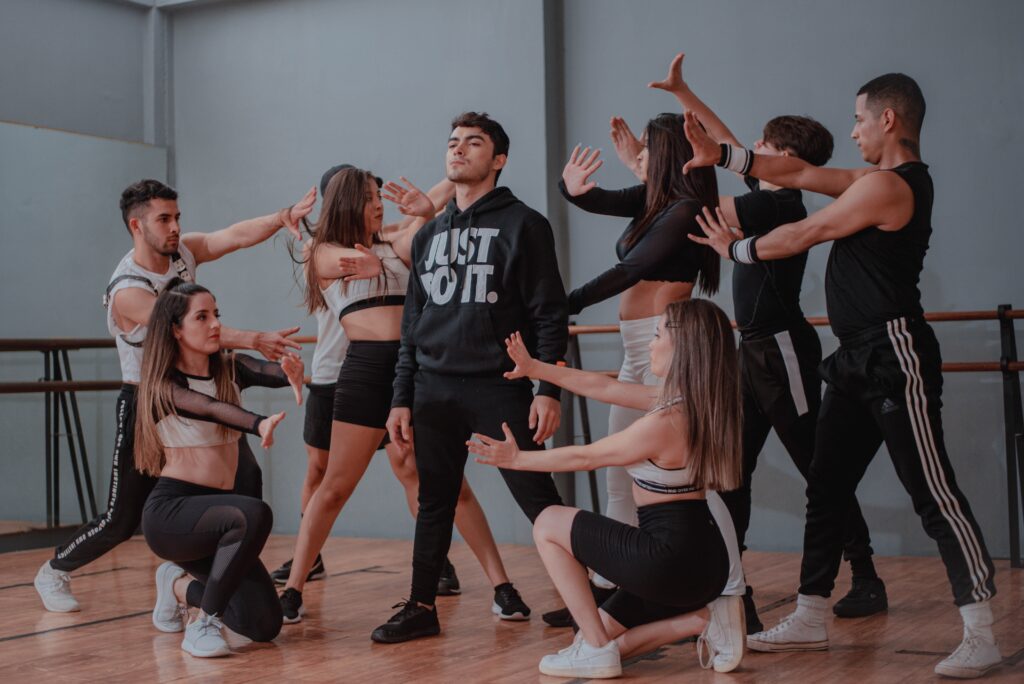
The Importance of Dance Class Etiquette
Respect for the Instructor and Fellow Students
Respecting your dance instructor and fellow students is crucial to creating a positive and supportive learning environment. Show respect by listening attentively to your instructor and following their instructions. Be patient and considerate towards your classmates, recognizing that everyone has their own learning pace. Avoid interrupting or talking over others, and offer support and encouragement whenever possible. By fostering a sense of respect and camaraderie, you’ll not only create a more enjoyable dance experience but also inspire others to do the same.
Punctuality and Attendance
Being punctual and attending dance classes regularly is a sign of commitment and professionalism. Arrive a few minutes early to allow yourself time to change into your dance attire and mentally prepare for the class. If for any reason you’re unable to attend a class, notify your instructor in advance and inquire about any makeup opportunities. Being consistent with your attendance shows respect for your instructor’s time and effort in planning the class, as well as respect for your fellow students who depend on your presence for group exercises and routines.
Proper Hygiene
Maintaining proper hygiene is not only essential for your own comfort but also for the well-being of your fellow dancers. Dance classes can be physically demanding and involve close physical contact with other participants. To minimize any discomfort or potential health risks, come to class clean and fresh. Wear clean dance attire and bring a sweat towel if needed. It’s also a good practice to wear deodorant and bring a spare shirt or towel to change into if necessary. By prioritizing personal hygiene, you contribute to a positive and pleasant dance environment.
Avoiding Distractions
During dance class, it’s important to stay focused and avoid unnecessary distractions. While it may be tempting to use your phone or engage in conversations with friends, doing so can disrupt the flow of the class and distract both yourself and others. Keep your phone on silent or turned off and place it in a designated area to avoid the temptation to check it during class. Stay attentive and engaged in the class activities, demonstrating your commitment to learning and making the most out of your dance experience.
Benefits of Dance for Mental Health
Boosts Mood
Dancing has the power to uplift your mood and boost your overall well-being. The combination of music, movement, and self-expression releases endorphins, which are natural mood enhancers. Engaging in dance classes can help reduce feelings of stress, anxiety, and depression while promoting feelings of joy and positivity. The rhythmic movements and the connection between mind and body create a sense of flow and allow you to experience a temporary escape from daily worries and concerns. Dancing allows you to fully immerse yourself in the present moment and cultivate a more positive mindset.
Enhances Cognitive Abilities
Beyond the physical benefits, dance classes also offer numerous cognitive advantages. Dance requires mental focus, concentration, and memory recall. Learning and remembering dance routines, patterns, and combinations stimulates your brain and improves cognitive abilities such as memory retention, spatial awareness, and multitasking skills. Dance classes can also challenge your creativity and problem-solving abilities as you explore different ways to interpret and express the music through movement. Engaging in dance regularly can help keep your mind sharp and agile.
Promotes Relaxation
Dance classes provide a space where you can let go of stress and tension and promote relaxation. The rhythmic movement and the physical exertion of dancing help to release built-up energy and alleviate physical and mental stress. The combination of music, movement, and concentration can create a meditative-like state, allowing you to enter a state of mindfulness and calmness. By channeling your focus and energy into the dance, you can experience a sense of serenity and achieve a mental and emotional balance.
Fosters Self-Expression
Dance is a powerful form of self-expression that allows you to communicate and connect with others on a deeper level. Dance classes provide a safe and supportive environment where you can explore your emotions, release inhibitions, and express your true self through movement. As you learn and master dance techniques, you’ll have the opportunity to inject your own unique style and interpretations into your routines. Dancing can help you discover new facets of your personality, build self-confidence, and cultivate a deeper sense of self-awareness and self-acceptance.
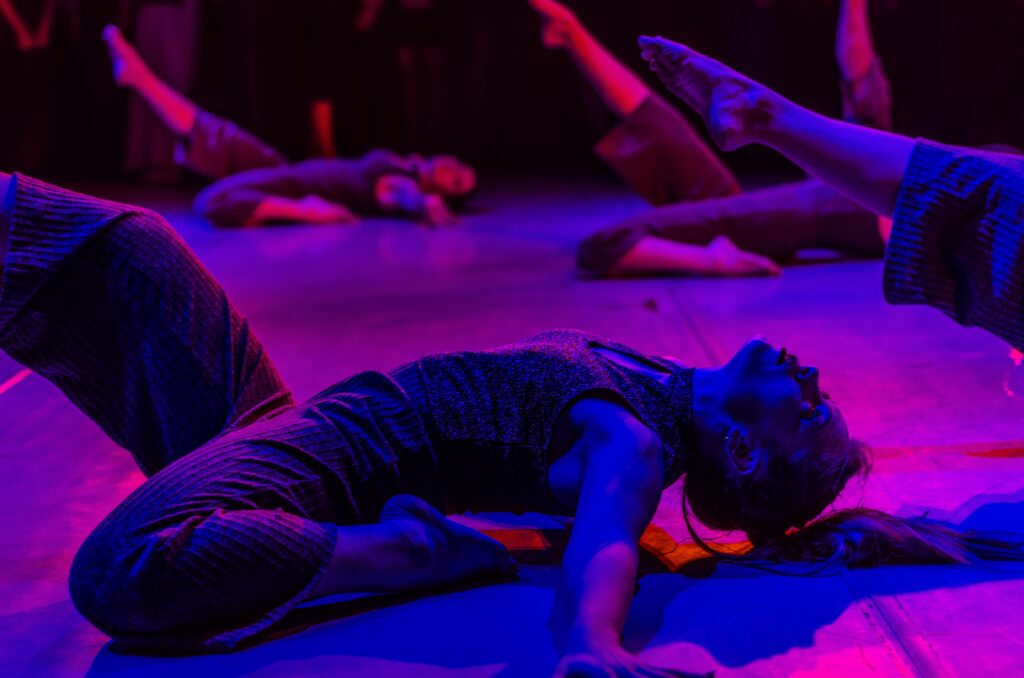
Overcoming Challenges in Dance Class
Learning New Moves
Learning new dance moves can be one of the most exciting aspects of taking a dance class, but it can also be challenging. It’s natural to feel overwhelmed or frustrated when faced with unfamiliar steps or routines. However, it’s important to remember that learning is a process and that progress takes time. Be patient with yourself and trust in your ability to improve with practice. Break down the moves into smaller components, ask for clarification from your instructor, and practice those moves separately before integrating them into a full routine. Embrace the challenge and celebrate each small improvement along the way.
Building Confidence
Building confidence is an integral part of your dance journey. Many people feel self-conscious or insecure when dancing in front of others, especially in the early stages of learning. However, remember that everyone starts as a beginner, and the purpose of dance classes is to learn and grow together. Focus on your own progress and journey rather than comparing yourself to others. Celebrate your achievements, no matter how small, and use them as fuel to boost your self-confidence. Visualize success, engage in positive self-talk, and surround yourself with supportive individuals who cheer you on.
Dealing with Performance Anxiety
Performance anxiety is a common challenge that many dancers face at some point. The pressure of performing in front of others can lead to nerves, self-doubt, and fear of making mistakes. To overcome performance anxiety, it’s important to prepare yourself mentally and emotionally. Practice visualization techniques to envision yourself performing confidently and flawlessly. Focus on the joy of dancing rather than on the potential judgment of others. Remember that mistakes are a natural part of learning and that they provide valuable opportunities for growth. Take deep breaths before performing and remind yourself that you’re capable and prepared.
Pushing Through Plateaus
At times, you may encounter plateaus in your dance progress where you feel stuck or stagnant. It can be demotivating to feel like you’re not making any noticeable improvements. However, plateaus are a normal part of any learning process and serve as opportunities for growth. Embrace the challenge and use it as a chance to refine your technique, explore new styles, or work on areas that need improvement. Seek feedback from your instructor, set realistic goals, and break them down into smaller, manageable steps. Remember that persistence and determination will help you break through plateaus and continue progressing in your dance journey.
Building Relationships in Dance Class
Teamwork and Collaboration
Dance classes provide a unique opportunity to develop teamwork and collaboration skills. Many dance styles, such as ballroom and contemporary, require partnering or group work. Working together with others to learn and perform choreography fosters cooperation, communication, and trust. You’ll learn how to synchronize your movements with your partners or fellow dancers, adapt to their cues, and create a cohesive and harmonious performance. Building strong teamwork and collaboration skills in dance class can translate into various aspects of your life, both personal and professional.
Meeting Like-Minded People
Taking a dance class allows you to connect with like-minded individuals who share a passion for dance. By participating in group classes, you’ll have the opportunity to meet people from different backgrounds, ages, and skill levels who all have a common interest in dance. The shared experience of learning, mastering new steps, and facing challenges together creates a sense of camaraderie and community. Dance classes can open doors to new friendships, networking opportunities, and a support system that encourages and motivates you throughout your dance journey.
Support and Encouragement
The dance community is known for its supportive and encouraging nature. In dance class, you’ll find yourself surrounded by individuals who share a genuine interest in your growth and success. Instructors and fellow dancers often provide words of encouragement, constructive feedback, and tips to help you improve. This positive and nurturing environment can boost your confidence, inspire you to push beyond your limits, and provide a sense of belonging. Having a strong support system in dance class can make all the difference in your motivation, enjoyment, and overall progress.
Creating Lasting Friendships
Building lasting friendships is a common outcome of participating in dance classes. Through shared experiences, mutual support, and the art of dance, you’ll have the opportunity to create meaningful connections with your fellow dancers. Whether it’s rehearsing together, attending social events, or simply bonding over a shared love of dance, these friendships often extend beyond the walls of the studio. Dance class can become a platform for building friendships that last long after your dance journey, enriching your life with new perspectives, shared memories, and ongoing support.
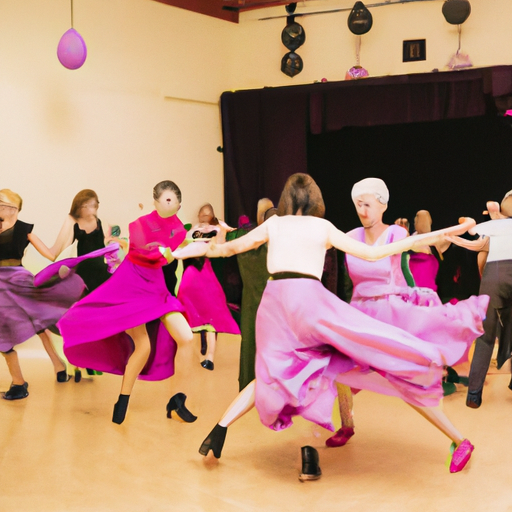
Common Misconceptions about Dance Classes
Dance is Only for the Young
One common misconception about dance classes is that they are only for the young. In reality, dance is a timeless art form that can be enjoyed by people of all ages. Many dance studios offer classes specifically tailored to different age groups, from children to senior citizens. Whether you’re a teenager or in your golden years, there’s a dance class out there for you. Don’t let age deter you from exploring the joy and benefits of dance. It’s never too late to start learning and discovering a newfound passion for movement.
Dance is Only for the Talented
Another misconception is that dance classes are only for those who are naturally talented or have prior dance experience. This couldn’t be further from the truth. Dance classes are designed to teach and nurture dance skills at all levels, from beginners to advanced dancers. Instructors understand that everyone starts somewhere and provide a supportive and inclusive environment for learning and growth. Taking a dance class is an opportunity to develop and improve your dance abilities, regardless of your previous experience or perceived talent.
Dance Classes are Hard to Follow
Some people may avoid dance classes because they believe they are difficult to follow or require exceptional coordination. While dance can be challenging, especially in the beginning stages, dance classes are structured to gradually introduce and build upon foundational movements and techniques. Instructors guide students step by step, breaking down complex routines into smaller, manageable parts. Through repetition, practice, and patient instruction, you’ll find yourself becoming more comfortable and confident in following and executing dance sequences. Remember, dance is a journey, and with time and practice, you’ll develop the skills to embrace the challenge.
Dance Classes are Only for Women
Contrary to popular belief, dance classes are not exclusively for women. Dance is a form of self-expression that transcends gender. Many dance styles, such as hip hop, tap, and ballroom, offer an inclusive and diverse environment for dancers of all genders. Dance classes provide individuals with an opportunity to explore their creativity, challenge themselves physically, and connect with their bodies and emotions, regardless of their gender identity. Embrace the diversity and inclusivity of dance classes and remember that anyone can benefit from the joy and fulfillment that dance brings.
Conclusion
Whether you’re seeking physical fitness, mental well-being, or a creative outlet, taking a dance class offers a multitude of benefits. From improving your coordination and flexibility to relieving stress and enhancing cognitive abilities, dance classes provide a holistic approach to self-improvement. By choosing the right dance class that aligns with your goals and interests, engaging in regular practice, and embracing the supportive dance community, you’ll embark on an enriching journey of self-discovery, personal growth, and lasting friendships. So why wait? Step onto the dance floor and let the music guide you towards a healthier, happier, and more vibrant life.




